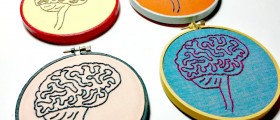
Chronic traumatic encephalopathy is a member of degenerative brain diseases. Patients suffering from this condition develop behavioral changes similar to those that occur in people suffering from Alzheimer's disease. However, unlike Alzheimer's disease chronic traumatic encephalopathy clearly results from repeated brain trauma. This is why this type of dementia can be timely prevented.
Patients suffering from chronic traumatic encephalopathy develop numerous neurological as well as physiological changes in the brain. There is also noticeable build-up of an abnormal protein called tau. Its accumulation in certain parts of the brain, where the protein normally is not found, is responsible for different changes in brain's functions.
Chronic traumatic Encephalopathy Clinical Characteristics
The condition inevitably leads to a variety of symptoms. Some of them include deterioration in attention, concentration and memory, confusion/disorientation, dizziness and headaches. Additionally, there may be lack of insight, poor judgment and overt dementia. Tremor, vertigo, impeded speech, slow muscle movements, staggered gait as well as hearing impairment are additional characteristics of the disease.
Chronic traumatic encephalopathy generally goes through three stages. In the first stage there are psychotic symptoms and affective disturbances. The second stage is characterized by social instability, erratic behavior and memory loss. There may also be symptoms which resemble initial symptoms of Parkinson's disease. The final stage of chronic traumatic encephalopathy includes progressive deterioration which inevitably leads to dementia. There are also multiple neurological changes and abnormalities.Who is at Risk for Chronic Traumatic Encephalopathy?
This condition is frequently reported in professional boxers. However, it may also affect athletes participating in other sports such as football players, professional wrestlers and soccer players.
As it has already been mentioned, chronic traumatic encephalopathy occurs as a consequence of repetitive closed head injuries. This is why it is frequently reported among people engaged in a variety of contact sports. The condition additionally affects epileptic patients as well as individuals who are victims of domestic abuse.
Chronic Traumatic Encephalopathy: Diagnosis and Treatment
Experts are still unable to diagnose chronic traumatic encephalopathy in living individuals. The condition can be only confirmed after death and by microscopic examination of the brain tissue. Still, there are ongoing researches which may soon be of great help in diagnosing the condition in living patients.
The problem with treatment is actually the result of inability of setting the final diagnosis while the affected person is still alive. Therefore, once the scientists figure out how to diagnose the condition timely, and obtain better insight in its progression, they will be able to determine specific treatment protocols.

















Your thoughts on this
Loading...